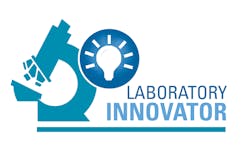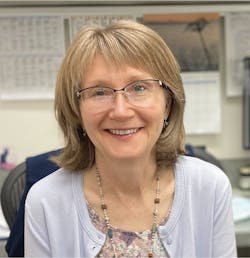I have always loved chemistry and math. When I was in high school, there was an extracurricular program that allowed students to shadow professionals where there might be an interest. I spent several months shadowing clinical laboratory scientists at my local hospital. Laboratory science was a good fit for three reasons: 1) I prefer limited patient contact 2) I enjoy working as a team 3) at the same time, being able to work independently.
What prompted you to pursue laboratory management?
Management was never something I aspired to. My former boss was grooming me to cover some of her duties when she left for vacation. When she left, the lab staff approached me, asking me to consider taking the role. I had been offered the manager position earlier in my career, but it was not the right time to consider it. I didn’t feel I had enough experience to do the job well. When I was approached by my peers, I realized that if I didn’t step into the position at that time, I probably never would. Also, I had been a generalist bench tech for 24 years, was the lead tech for chemistry, and did all the ordering for the lab. While I still had things to learn, I had reached a plateau. So, it was an opportunity to learn new skills and grow myself professionally.
Turning to the work at South Peninsula Hospital, will you briefly describe the self-order and self-pay Request-a-Test program and explain why you launched it?
The Request-a-Test (RAT) program was the brainchild of my former manager, launched for a few reasons. One, it made sense that tests the community could obtain during the annual Rotary Health Fair should be available all year round. Secondly, it is expensive for individuals to pay to see a provider when they have a sore throat, for example. If they can have a rapid strep test done instead, they can schedule an appointment if the test is positive. Another reason is patients are savvier about their healthcare. Someone with elevated lipids or diabetes has a good understanding of what those values mean and what they are trying to achieve. Living in a fishing community in the spring, many fisherman and other allied industries need urine drug testing. The RAT program allows individuals to order testing, as needed, for themselves or their employees. Since the RAT program is patient driven, there is no submission of charges to insurance. Payment is required at the time of service.
We have other promotions that are done throughout the year. In Feburary, during heart month, we offer reduced prices on heart tests. In October, as mentioned, the hospital, in collaboration with the Rotary, runs a month-long health fair where lab tests are offered at a greatly reduced prices.
What result/benefits have you seen from the program?
The RAT program has had a foundation of education and empowerment where individuals can take charge of their health outcomes. The public is becoming more educated, due to access to the internet and mass media. Healthy lifestyle choices are promoted from many angles and allowing the community to access testing supports those efforts. One benefit is early disease detection. We have picked up leukemia and other diseases, through the testing that we have provided. Living in the northern climes, with less daylight in the winter months, Vitamin D testing has been a very popular test on our RAT menu, as it has a large impact on mental health and physical health.
What is the biggest challenge your lab faces in providing testing services to patients in Alaska? How have you overcome it?
One of the challenges is healthcare costs and having assistance, such as insurance or Medicaid. The hospital has several programs in place to help make testing more affordable and during open enrollment for insurance, it expands staff hours to help individuals sign up for assistance.
The senior leadership team and the hospital governing boards have been very supportive of the laboratory. During the pandemic, the biggest challenges have been the supply chain and staffing. We are still dealing with a lot of our supplies being on back order or on allocation. Currently, I have been able to bring on extra staff.
Will you briefly describe one of the mission trips you have taken and why you pursue this work?
Eleven years ago, I went to volunteer at a women’s shelter in Mexico. I fell in love with the people and being of service. I went to Mexico for nine years until COVID-19, two years ago. I began looking for medical mission opportunities, and through World Medical Mission, part of Samaritan’s Purse, found a need for a technical supervisor at Soddo Christian Hospital in Ethiopia. In 2017, I spent three weeks working with the microbiology tech and returned in 2019 for more one-on-one collaboration, to invest and return, more than once, building relationships with locals.
I am working on my MPH degree because it was difficult to find a medical mission program that was geared to the laboratory. By broadening my educational base, I would have more opportunities to serve.


